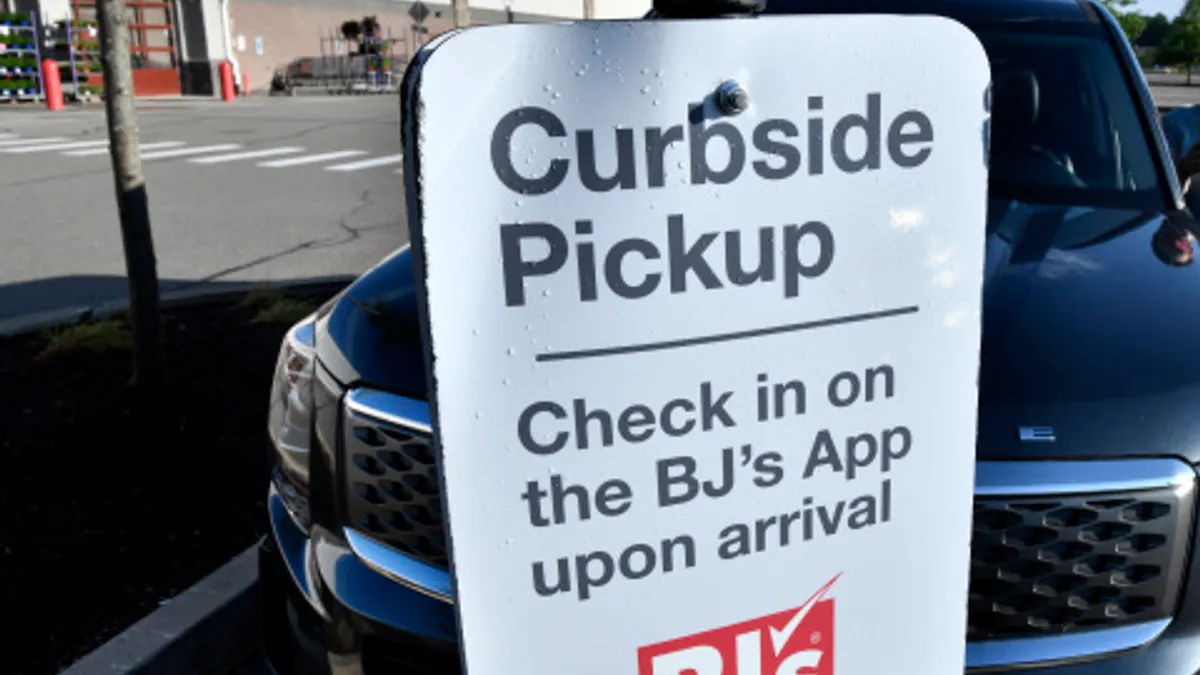Dive Brief:
- Grocery e-commerce sales totaled $6.8 billion in May, a decline of just under 1% compared with the same period last year, according to data released Tuesday by Brick Meets Click and Mercatus.
- Pickup orders accounted for nearly half of U.S. digital grocery sales, while delivery represented about a third of the market and the ship-to-home channel claimed a share of around 19%.
- Mass retailers again expanded their base of online customers last month as traditional grocers lost digital shoppers, underscoring the challenges supermarket operators face in the e-commerce sphere.
Dive Insight:
Online grocery sales slipped in May even as more consumers used e-commerce services, in part because the pace of orders was down across all three fulfillment channels, Brick Meets Click found.
That trend hit pickup especially hard. While pickup remained the top choice among online grocery shoppers, sales were off by almost 4% as the fulfillment method posted a 6% decline in order frequency along with a slight drop in the value of the average order.
Delivery sales came in virtually unchanged last month, but the channel still managed to gain market share as its base of monthly active users rose by more than 10% year over year.
Brick Meets Click attributed the delivery sector’s gains partially to discounts Instacart and Walmart offered on the cost of annual memberships. Those price cuts “show how players like Instacart and Walmart are attempting to keep active customers engaged by getting them to commit to 12 months instead of just one,” Brick Meets Click Partner David Bishop said in a statement.
The ship-to-home channel continued to make gains in May. Sales growth for the channel, which includes orders delivered to shoppers by carriers such as UPS and FedEx, rose about 9%, as both the average order value and the number of monthly active users grew sharply.
The pool of households that have ever placed a grocery order online barely budged in May compared with the same month in 2023, which suggests that the growth in the number of monthly active users primarily reflects people returning to the market, according to Brick Meets Click.
Traditional supermarkets remain the leading source of groceries for people when online and in-store sales are taken into account — but their share of the grocery market was still down compared with May 2023, Brick Meets Click reported.
The findings are based on a survey of 1,724 shoppers Brick Meets Click fielded on May 30 and May 31.













